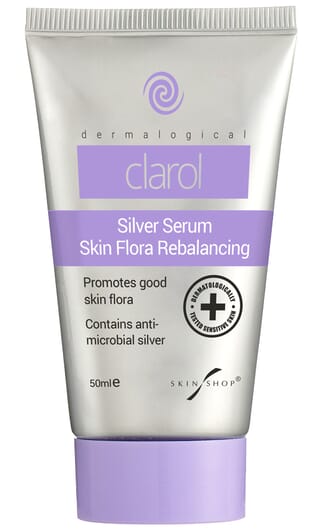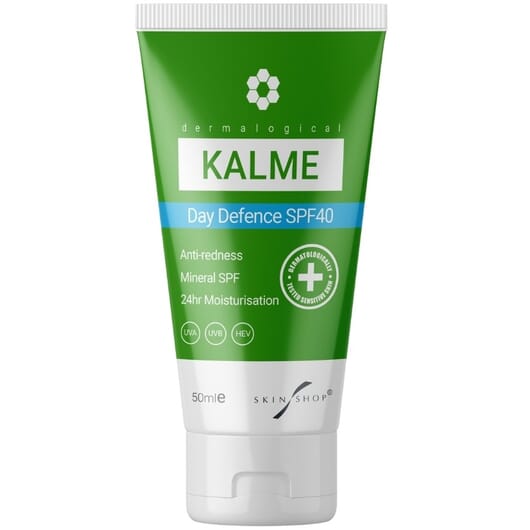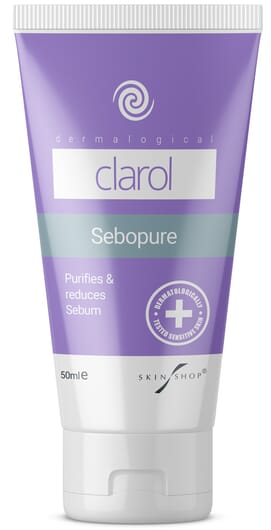Acne is traditionally a skin problem associated with teenagers, but increasingly research reveals that adult acne is now dramatically on the rise adults later in life, in particular women in their 40’s and 50’s who are approaching menopause.
Studies reveal that 50 per cent of women suffer from adult acne or menopausal acne at some point in their adult life.
“Late bloom acne is often formed as clumps of smaller pussy or bumpy spots under the surface rather than individual larger blackheads or pustules as with teen acne,” says consultant dermatologist Dr Eva Melegh.
“Unlike teen acne, late bloom adult acne is also often accompanied by a bumpy red skin or flushed skin.”
Although getting spots later in life seems unfair, unexpected and inexplicable, the good news is that the problem (and solution) of late bloom adult acne is being increasingly targeted by modern skincare technologies and is more responsive to treatments than teen acne.
Unlike teen acne, which is often temporary but severe and often unresponsive to treatments due to its purely hormonal cause, late bloom adult acne is often less severe and can be dramatically improved with targeted skincare treatments used over a longer period of time.
Dr Eva highlights five causes of late bloom adult acne;
-
Adult acne cause 1 - Testosterone fluctuations
Skin experts believe that an increase in the male hormone, testosterone, is a major cause of adult acne in women. Increased levels of stress, the menopause, HRT and high levels of exercise can all lead to an increase in testosterone.
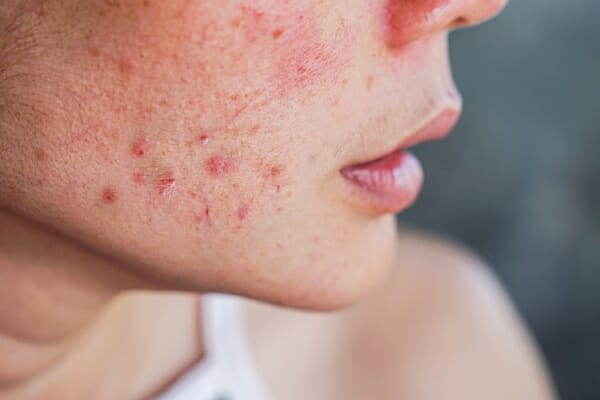
Testosterone creates an excess of sebum — an oily/waxy substance produced by the sebaceous glands to lubricate the skin.
Too much sebum causes a build-up of oil and dead skin cells in hair follicle pores. Bad skin bacteria then make their way to the blockage, and this causes the redness and inflammation of a spot.
-
Adult acne cause 2 - Beauty products and cosmetics
Adult acne can also be triggered by over sensitive skin due to a build up intolerance to chemicals in skincare and cosmetics products, leading to acne-like reactions to skin care products and cosmetics.
Adult acne accompanied by flushing and redness is caused by changes and weakening in the vascular structure of the blood vessels of beneath the skin that gets worse with age and is most prevalent in women over the age of 45.
-
Adult acne cause 3 - Changes in pore structure
As you age, the strength of the cellular wall of a pore weakens. This makes the pore stretch out and become larger, which means that it may be more likely for the pore to become clogged with surface dirt and debris from your skin’s top layer (the epidermis).
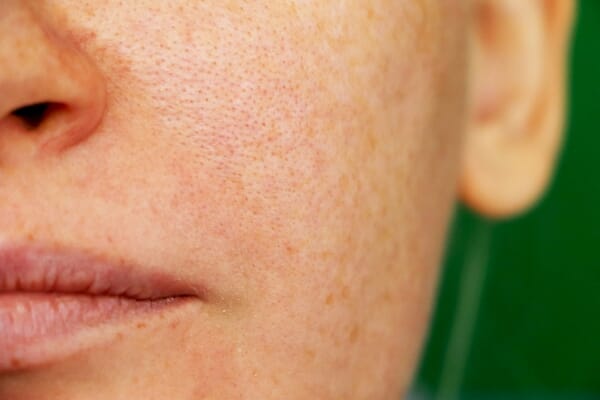
While most adult acne is caused by hormonal shifts, the changes in the structure of your skin and the size of your pores due to ageing could lead to ‘patches’ of inflamed blemishes. So products that can help reduce pore size can be helpful for improving adult acne.
-
Adult acne cause 4 - Dieting
The jury is out on whether diet plays any part in the onset of adult acne, although the frequent radical diet changes from low carb to low fat endeavours of modern women (the average woman goes on 15 diets in a lifetime) to lose weight is likely to have a negative effect on skin as radical changes in diet can cause shifts in hormonal balances, especially in women entering menopause.
The key to controlling late bloom acne is to try and keep hormones as balanced as possible during the run up to menopause and entering on new or radical diets on a frequent basis is likely to contribute considerably to hormonal flux.
-
Adult acne cause 5 - Low levels of good skin bacteria
Due to over cleansing and the use of too many anti-ageing products and dryness due to age-related moisture loss, often levels of good skin bacteria run low in older skin as the skin microbiome is disturbed.
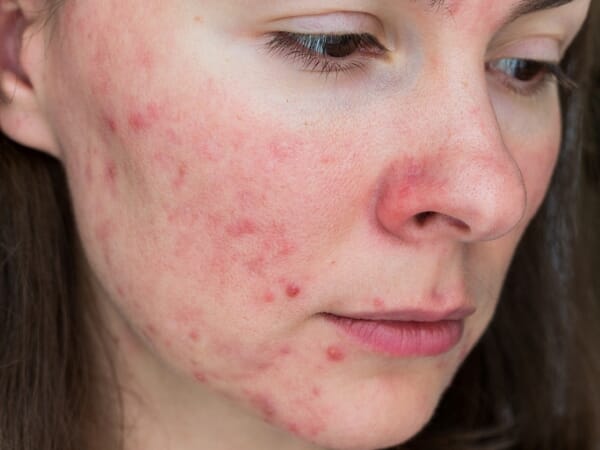
Once this happens skin barrier function and the integrity of the skin is weakened allowed bad skin bacteria to get in more easily into the epidermis, which can lead to bacteria relate adult acne.
How to treat late bloom adult acne
Late bloom adult acne tends to be more persistent than teen acne but in the long run is often more responsive to treatments providing they are gentle and more progressive.
The main issue with treating adult acne is that typically the skin is more sensitive which makes treatments more problematic as if you irritate or aggravate it while treating your acne, you may end up with even more redness, bumps and irritation.
Late bloom acne responds well to combinations of more natural, gentle and multi-action anti-acne skincare regimes. It can’t just be treated with one ‘blitz’ method like teen acne
Here are Dr Eva’s 5 tips for treating late bloom adult acne;
-
Avoid acne products for oily skin
Spot treatments aimed at teens are not suitable for adult skin as they contain harsh anti-bacterial agents, typically salicylic acid and/or peroxide (bleach), which although are effective at killing all bacteria on the skin’s surface, they strip the skin of all natural oils and leave adult skin incredibly dry and flaky and cause premature ageing.

For adult acne its best to try and avoid products aimed at oily acne prone skin or teen skin which contain anti-bacterial chemicals such as benzoyl peroxide or azelaic acid. It’s also best to avoid any product with any more than 2% salicylic acid in it, as this really strips the skin of oils and can dry it out and cause further irritation.
-
Build up good skin bacteria
The key difference in treating adult acne as opposed to teen acne is maintaining the integrity and balance of good skin bacteria in the healthy skin around the acne, while at the same time attacking the bacteria getting into the acne lesions. It’s crucial that skincare regimes and products do BOTH, as skin is more fragile, drier and more sensitive. Product that contain skin prebiotics to fee good skin bacteria are essential for skin prone to adult acne.

Higher levels of good skin bacteria on the surface of the skin helps in two ways, it reduces the levels of bad bacteria which can get into acne lesions and blocked pores and cause swelling and puss, it also helps strengthen the integrity of older skin, helping to reduce pore stretching which can lead to acne.
Try Clarol Silver Serum, which is a smart anti-bacterial serum that only attacks the bad acne bacteria while building up good skin bacteria to help strength and improve skin quality and contains no harsh anti-bacterial agents or chemicals.
-
Don’t over cleanse
Over-cleansing can irritate blemishes and dry out adult acne skin. Adult acne is much better off with the use of facial oils for cleansing instead of stripping the skin with anti-bacterial agents as with younger oilier skin. Natural cleansing oils such as coconut oil or rosehip oil can remove most dirt and comsetics. Or alterntively a chemical and perfume free gentle water-free cleanser is much more benficial for adult acne than anti-bacterial or solvent based foaming cleansers.
Try Kalme Water-Free Cleanser for very sensitive skin prone to redness and inflammtion.
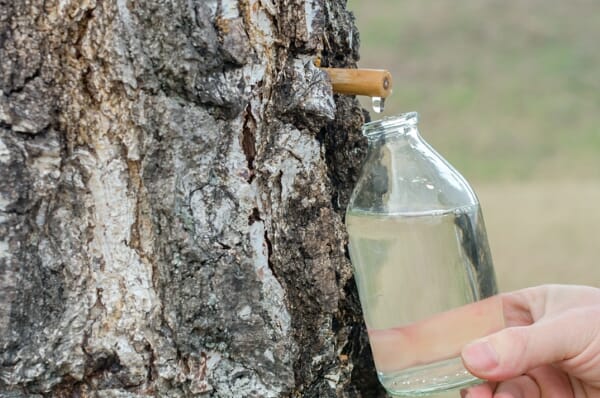
If oil or water-free cleansing doesn't leave the skin quite clean enough for individual preferences the bets way to cleanse skin prone to adult acne is to gentle double cleanse with a toner after water-free or oil cleansing. This removes any final traces of dirt or make up and leaves skin feeling fresher and tlighter but without stripping or drying the skin. Birch bark water is an excellent natural toning ingredient for gently cleaning skin and tightening pores as well as calming down inflammation from adult acne.
Try Clarol Birch Water Pore-Minimising Toner which is free from checmials and perfumes.
-
Use a daily mineral SPF to avoid UV related inflammation
Sun damage can further add to inflammation and dryness and therefore damage the skin barrier further which leads to more bad skin bacteria entering the epidermis. Using a daily SPF is crucial for skin prone to adult acne. A mineral SPF containing zinc is idea as pure zinc mineral SPF do not irritated sensitive skin and also have an anti-inflammatory action on spots and underlying redness.

Try Kalme Day Defence, a day cream containing a specific anti-redness ingredient from caper buds, a super strong antioxidant to reduce inflammation, 24-hour moisturising ingredient and a pure zinc mineral SPF to protect very sensitive and red skin from UV damage.
-
Don’t use sebum blocking products
Many acne products claim to block or inhibit sebum production. However, sebum is very important for adult skin as adult skin is prone to dryness and damage and sebum is the skin’s natural moisturiser so adult needs all the sebum it can get.
So even if you have late bloom acne you should avoid products that claim to inhibit sebum production.

A better option is to let sebum flow freely but use products that help purify sebum so that it does not oxidise on the skin’s surface which can then lead to pore blockages and spots.
Try Clarol Sebopure, a natural sebum preserver that helps keep sebum uncontaminated as it reaches the skin’s surface and pushes out through the skin pores, reducing the risk of pore blockages while allowing skin to retain moisture from its natural sebum production.




